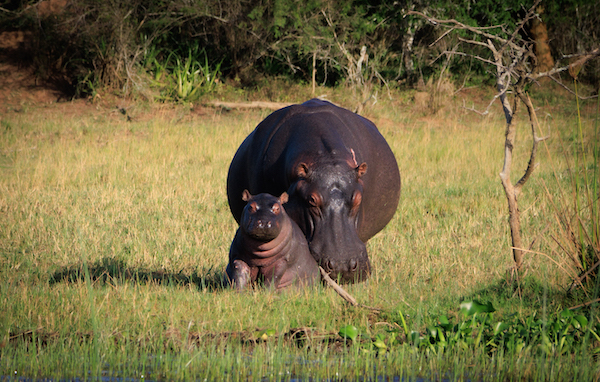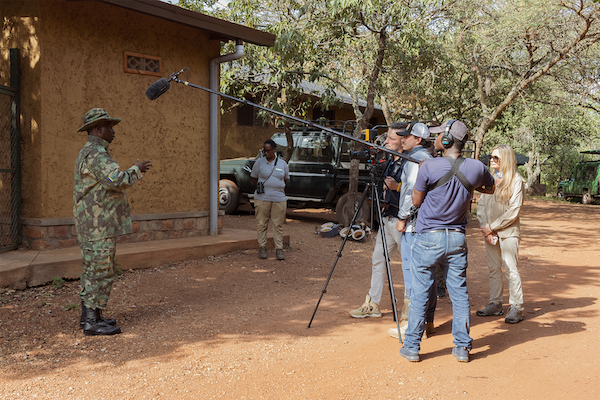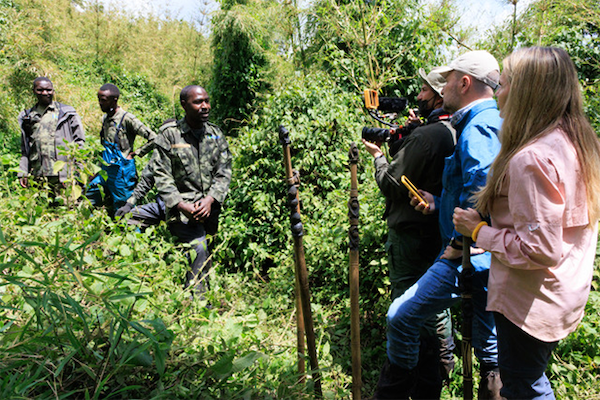
Environmental docs tend to throw out a litany of ecological horrors that leave viewers feeling helpless. Escape from Extinction: Rewilding takes a different approach. Using case studies from around the globe, the film suggests that we have the power to improve our environment.
Narrated by Meryl Streep, Escape from Extinction follows a typical wildlife formula made up of nature footage, archival footage, and talking heads. The flow of voices and imagery is overwhelming at times, diluting the impact of the messages the filmmakers are trying to deliver.
Their warnings are dire: one million species will go extinct in the next year. Acid is destroying kelp forests off the California coast. Algae blooms threaten wildlife in Florida waters. The imagery is alarmist: wounded or killed animals, clear-cut forests, polluted waters.
Writers Alex Vincent Blumberg and Peter Meadows then turn to success stories, like Rwanda. The site of 1994’s tragedy in which 800,000 were killed within 100 days, the country has undergone a transformation.

Part of that is due to the government’s efforts to shore up ecotourism. Officials have enlarged the Akagera National Park after it has shrunk to one-third of its size. They have imported lions and black rhinos to restock the wildlife populations.
After corporate agriculture damaged farmland in Bolivia, institutions like Lor Parque have taken steps to revive ecosystems, protecting habitats for blue throated macaws, for example.
Scientists realized that healthy kelp forests rely on sea otters to survive. But sea otters were hunted almost to extinction. By reintroducing them to Pacific waters, scientists have raised their population to some 3000.
Seagrass in Florida, a vital source of food for manatees, has been erased by algae blooms. Volunteers now vacuum algae by hand from the sea floor, and plant eelgrass to help stabilize the ecosystem.
In her voiceover, Streep notes that “rewilding” also means dealing with invasive species. For example, rabbits and especially cane toads have wreaked havoc with Australian wildlife. Hippos who escaped from their shelters in Colombia have led to 500 human fatalities a year.
Escape from Extinction acknowledges conflicts among zoologists. Some didn’t want the extinct Asiatic cheetah in India replaced by African cheetahs. There are arguments over giraffes, wolves, and other wildlife species.
Confrontations with poachers and repressive governments have led to the deaths of over 2000 environmental activists.

But director Matthew R. Brady ends Escape from Extinction on positive notes, allowing scientists to point to potential solutions that can lead to positive results.
Brady’s technique raises questions. The use of archival footage can be confusing. The narration can be cagey. A statement that two-thirds of the land mass of Antarctica is “affected by human activity” is accompanied by shots of collapsed oil tanks, but without proper IDs, viewers can’t be sure of the connection.
Some shots driven by visual effects have misleading sounds attached to them, like chainsaws droning behind disappearing forests. Besides, some would argue that clear-cutting makes sense in certain situations. To be fair, many documentarians take similar approaches. Strict accuracy may be more difficult to achieve, but makes for stronger films.
The main argument against Escape from Extinction is that it feels like a PowerPoint presentation buttressed by talking heads. It’s hard to disagree with the messages here, but the way they are not always presented are in the most effective ways.
Credits
Director: Matthew R. Brady. Writers: Alex Vincent Blumberg and Peter Meadows. Voiceover: Meryl Streep.
In theaters now.
Photos courtesy MRB Productions. Top: baby hippo and mother. Middle: Filming in Akagera National Park. Bottom: Filming in Volcanoes National Park.


